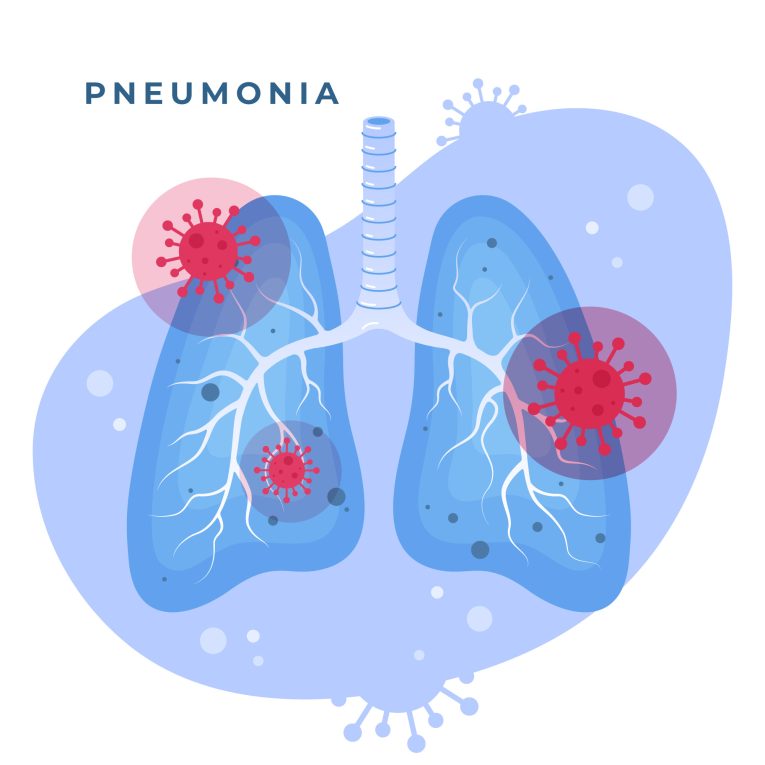Pneumonia:
The acute respiratory disease known as pneumonia is characterized by inflammation of one or both of the lungs’ alveoli or air sacs. These sacs have the potential to fill with pus or fluid, resulting in symptoms that can be anything from minor to fatal. Comprehending the signs and origins of pneumonia is essential for efficient avoidance, prompt identification, and suitable intervention.
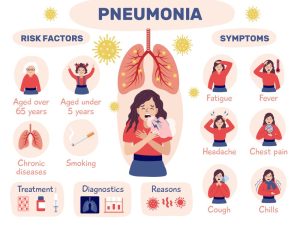
Melinda Gates states, “The biggest killers of children around the world are two things: diarrhoea and pneumonia. When you think about it, in the United States, kids don’t die of diarrhoea anymore, but it’s a huge problem in the developing world.”
(https://www.azquotes.com/quotes/topics/pneumonia.html?p=2)
Symptoms of Pneumonia:
Pneumonia can cause minor to severe symptoms, depending on the type of germ causing the infection, the patient’s age, and general health.
The pneumonia symptoms include:
1. Cough: This can be a dry cough, or it could produce clear, white, yellow, or even greenish phlegm.
2. Sweating, chills, and fever: The temperature can fluctuate between low and high.
3. Shortness of breath: When the lungs’ ability to hold air is weakened, even routine tasks may become challenging.
4. Chest pain: This pain often worsens when taking a deep breath or coughing.
5. Fatigue or feeling unusually weak or lethargic.
6. Other symptoms can include nausea, vomiting, diarrhoea, and confusion, especially in older adults.
Newborns and infants might not exhibit any symptoms of the infection. They might also have trouble breathing and eating, have a fever and cough, look agitated or exhausted and lacking in energy, or vomit.
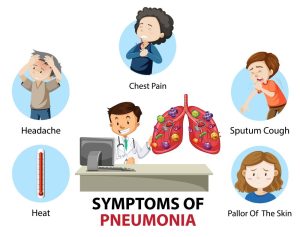
Different Stages of Pneumonia Symptoms:
There are 4 stages of pneumonia symptoms, which have been described below:
Stage 1:
Congestion: In the first stage, which occurs during the first day or first few hours of infection, you will experience coughing and fatigue.
Stage 2:
Red Hepatization: This is the second stage, and this is where the symptoms start to worsen. On conducting lab tests, your lungs will look deep red, confirming the presence of pneumococcal bacteria in your body.
Stage 3:
Grey Hepatization: The colour of the lungs changes from red to grey, but you still have pneumonia symptoms.
Stage 4:
Resolution: This is the stage of healing. In this stage, your airways will start to get back to normal, and symptoms will start to ease.
Some pneumonia patients may heal quickly, while some may take time, and it all depends on how your body reacts to the medicine. Taking medicines at the proper time and maintaining a healthy diet will allow you to get well soon quickly.
Causes of Pneumonia:
Pneumonia can be caused by a variety of organisms, including bacteria, viruses, and fungi, and the causes can vary with age and geographic location:
- Bacterial Pneumonia: The most common cause of bacterial pneumonia in adults is Streptococcus pneumoniae. Other bacteria like Mycoplasma pneumoniae and Chlamydophila pneumoniae are frequent causes of “walking pneumonia,” a milder form of the disease.
- Viral Pneumonia: Respiratory viruses, including influenza (the flu), respiratory syncytial virus (RSV), and SARS-CoV-2 (the virus that causes COVID-19), are common causes of pneumonia. Viral pneumonia is usually milder, but in cases like influenza and COVID-19, it can be severe or fatal.
- Fungal Pneumonia: This is more common in individuals with chronic health problems or weakened immune systems, including those caused by diseases such as cancer or HIV/AIDS. Common fungi that cause pneumonia include Pneumocystis jirovecii, Cryptococcus species, and Histoplasma species, which are prevalent in specific geographic regions.
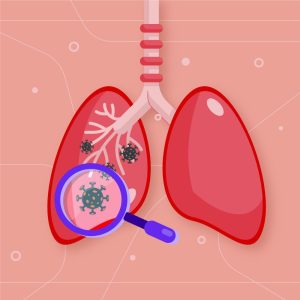
Pneumonia Risk Factors:
The higher risk factors for pneumonia are:
- Age: People of 65 years or older and infants and children under the age of two are more vulnerable.
- Medical conditions: Weakened immune systems and long-term illnesses like diabetes, asthma, COPD, or heart disease make people more vulnerable.
- Both drinking alcohol and smoking can weaken the respiratory tract’s natural defences against respiratory illnesses.
- Hospitalization: Especially in critical care, mainly if breathing apparatuses (ventilators) are being used.
Pneumonia Complications:
Pneumonia can lead to serious health complications, especially in older adults, small children, and people with weakened immune systems.
1. Respiratory Failure
- Respiratory distress syndrome eventually builds up, causing very low levels of oxygen, basically due to very severe pneumonia. In the most severe situations, mechanical means of assisting respiration may be needed.
2. Pleural Effusion (Fluid Around the Lungs)
- Infection can cause fluid to build up between the lung and chest wall (pleural space).
- In severe cases, this fluid may need to be drained using a needle or chest tube.
3. Lung Abscess
- Pockets of pus can form in the lungs, requiring prolonged antibiotic treatment or surgical drainage.
4. Sepsis (Blood Infection)
- Bacterial pneumonia can spread into the bloodstream, causing septic shock, a serious condition that can lead to organ failure.
- Requires ICU care and strong antibiotics.
5. Chronic Respiratory Problems
- Some cases of pneumonia may lead to irreversible lung impairment, which may make breathing difficult for years to come.
- Long-term ramifications pose a greater risk to patients suffering from asthma and COPD.
6. Worsening of Underlying Conditions
- Pneumonia can aggravate pre-existing conditions like heart disease, diabetes, and kidney disorders, making them harder to manage.
7. Multi-Organ Damage
If pneumonia can be further complicated with sepsis, the heart, brain and kidneys may be affected, along with many other organs.
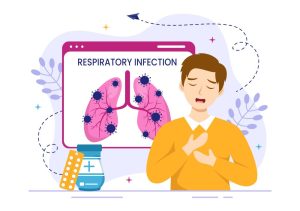
Pneumonia Diagnosis:
Pneumonia is diagnosed by:
1. Physical Examination
A doctor listens to the lungs using a stethoscope to check for abnormal sounds like crackles or wheezing.
2. Chest X-ray
Confirms pneumonia, showing areas of infection in the lungs.
3. Blood Tests
It detects infection and helps determine whether it is bacterial, viral, or fungal.
4. Sputum Test
Identifies the specific pathogen causing pneumonia by analyzing mucus coughed up from the lungs.
5. Pulse Oximetry
Measures oxygen levels in the blood to assess breathing efficiency.
6. CT Scan (if needed)
Provides a more detailed image of the lungs for complex or severe cases.
7. Bronchoscopy (rare cases)
If standard tests are inconclusive, a flexible tube is inserted into the airways to collect lung samples.
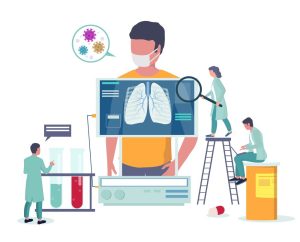
Pneumonia Treatment:
Depending on the kind of pneumonia and the severity of symptoms, pneumonia treatment usually consists of antifungal medicine for fungal infections, antivirals for some viral instances, and antibiotics for bacterial infections. Maintaining hydration intake, taking cough medications, and taking over-the-counter fever reducers are examples of essential supportive care.
Knowing the signs and causes of pneumonia can help with early diagnosis and treatment, which lowers the chance of serious consequences and speeds up recovery. Some pneumonia may be mild, which will allow you to recover at home, while serious cases may require hospitalization. With the emergence of vaccines, it is always advisable that you take a complete dose of pneumonia vaccine and prevent yourself from this deadly disease.
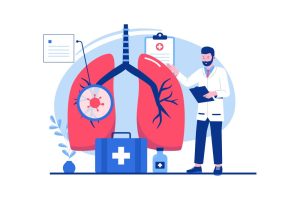
Pneumonia Prevention:
The following methods can prevent pneumonia:
✔ Get vaccinated, e.g. pneumococcal vaccines (pneumococcal, flu, COVID-19)
✔ Practice good hygiene (wash hands, wear masks if needed)
✔ Avoid close contact with sick individuals
✔ Maintain a healthy lifestyle (nutrition, sleep, and exercise)
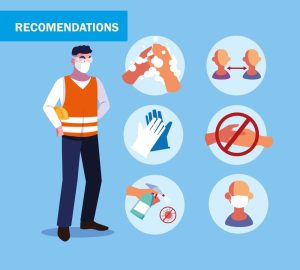
FAQ’s:
1. Is pneumonia deadly?
Yes, pneumonia can be fatal, particularly for older individuals, small children, and those with compromised immune systems.
2. Is pneumonia contagious?
Yes, pneumonia is contagious, depending on the cause of infection. Bacterial and viral pneumonia spreads through coughs, sneezes, or contact, while fungal pneumonia is not contagious.
3. How is pneumonia treated?
Pneumonia treatment involves:
- Bacterial Pneumonia: Treated with antibiotics like amoxicillin, IV antibiotics, and fluids for severe cases.
- Viral Pneumonia: Antivirals may help; rest is crucial for recovery.
- Fungal Pneumonia: Requires antifungal medications.
4. When to seek hospitalization for pneumonia?
- Being over 65 years old
- Having a cardiovascular disease or a prolonged lung problem
- Baby or young child has pneumonia
- Being very unwell
5. What is the recovery time for pneumonia?
- Many people feel better in 2 to 4 weeks.
- Few people feel better and return to their everyday daily work within a week.
- For some, it can take a month or more.

